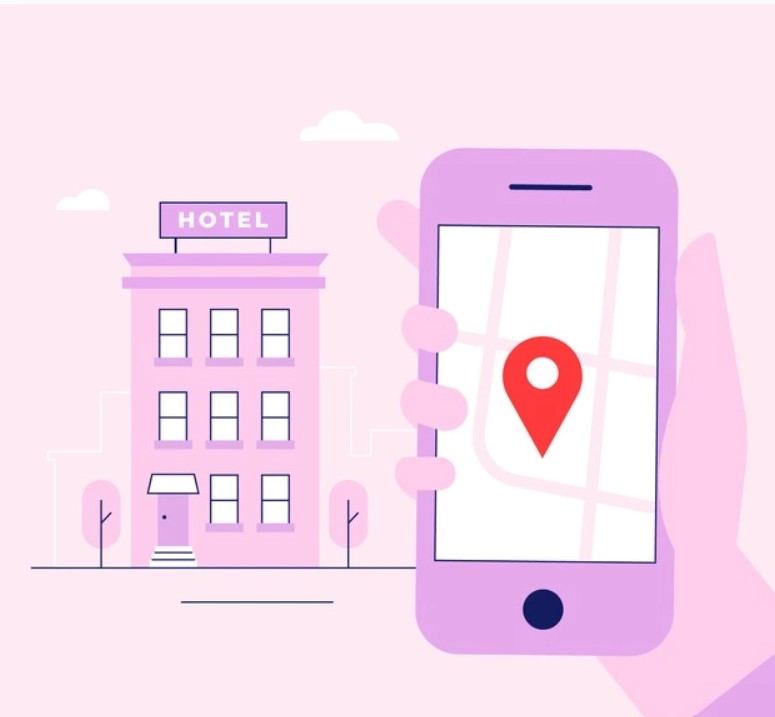Location-based marketing or marketing based on location is a new trend in commerce. It helps businesses target consumers on an individual level – through online notifications based on a person’s physical location. Using contactless marketing, sellers can reach out to customers based on criteria such as proximity to a store, events in a particular city or region, and more. With a competent approach to the advertising strategy, it is possible to form targeted offers for a specific segment of customers, which will improve the quality of service and ensure a more complete development of the business.
Types of location-based marketing technologies
Location-based marketing has emerged due to the explosive growth in the number of connected devices. Today, almost everyone uses devices that are connected to the Internet — smartphones, watches, cars, and more. Many of these tools track the location of their owner, which allows marketers to analyze data and better understand consumer preferences.
There are several ways to use location data in marketing campaigns – through geo targeting, geofencing, geographic conquest, and beacon-based contactless marketing.
Geo targeting
Geo targeting is used to send personalized messages to users. If a person has allowed the mobile application to access their location, then they can send messages or push notifications depending on the proximity to the store. The technology works through the unique IP addresses that each connected device has. The main benefit of geotargeting is improving the customer experience through personalization. For example, marketers can send queries to users for needs that are specific to their location (weather, local news, or events).
Geofencing
Geofencing is the creation of a zone within a certain area. As soon as the target audience enters this zone, it becomes an active target of the advertising campaign, that is, it begins to receive content, offers or other forms of messages from brands. An example of such a boundary is an area that can encompass a popular shopping mall, an area in front of a restaurant or movie theater, and more. While geofencing is less accurate than others, it can be a great tool for advertising campaigns in your business area.
Beacon-based contactless marketing
IBeacon-based geolocation contactless marketing uses special beacons that pick up Bluetooth signals from users’ smartphones. The devices send out signals that prompt the server to send the specified content to the shoppers’ phones. The technology provides enterprises with a direct channel of communication with customers. Marketers can track users indoors for more targeted targeting and insight into customer behavior.
Geographic conquest
Geographic capture technology uses user GPS location data to distract potential customers from competitors’ locations. For example, car dealerships can create a border around a competing company’s store. When the target consumer hits this boundary, an offer is sent to him, which will induce him to visit another dealer. Geographic conquest allows organizations to gain wider market share and new customers. With technology, they can more quickly and easily entice users to abandon a purchase from a competitor and switch to them.
Benefits of location-based marketing for companies
Location-based marketing has the potential to bring many benefits to both marketers and buyers. Key advantages of the technology:
- the ability to stimulate the attendance of various organizations by informing users about proximity and promotions;
- the ability to send push notifications with information or coupons;
- increasing customer loyalty by providing them with route maps for the premises;
- improving user experience;
- the ability to collect analytics to optimize business space.
Cases from famous brands
Here are some examples of how businesses and organizations are implementing this type of marketing in their work:
- The Whole Foods supermarket chain has connected to Thinknear, a geolocation marketing service. With it, she placed geofences around her stores and set up targeting for mobile users passing by outlets.
- Finnish retailer Kesko used contactless marketing technology based on iBeacon beacons. A navigation module from Navigine was integrated into the grocery carts, which made it possible to build convenient routes to the shelves with the necessary products.
- Barneys New York used beacons to digitize its flagship store in the Chelsea area of Manhattan.
Navigine implements geolocation-based marketing solutions and offers geofencing software to businesses. The use of such a tool opens up broad prospects for business development and ensures a personal approach to each customer.

